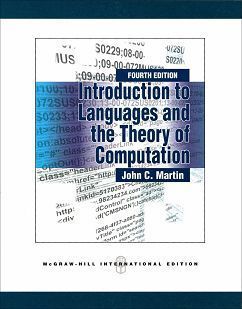書籍分類

Introduction to Languages and the Theory of Computation 4/e
作者:John C. Martin
原價:NT$ 950
ISBN:9780071289429
版次:4
年份:2011
出版商:McGraw-Hill
頁數/規格:436頁/平裝單色
版次:4
年份:2011
出版商:McGraw-Hill
頁數/規格:436頁/平裝單色
內容介紹 本書特色 目錄
- Description
Introduction to Languages and the Theory of Computation helps students make the connection between the practice of computing and an understanding of the profound ideas that defines it. The book's organization and the author's ability to explain complex topics clearly make this introduction to the theory of computation an excellent resource for a broad range of upper level students. The author has learned through many years of teaching that the best way to present theoretical concepts is to take advantage of the precision and clarity of mathematical language. In a way that is accessible to students still learning this language, he presents the necessary mathematical tools gently and gradually which provides discussion and examples that make the language intelligible.


